 W
WThe Académie d'Architecture is a French learned society whose purpose is the recognition of architectural quality. Founded in 1840 as the Société Centrale des Architectes, the society was renamed Académie d'Architecture in 1953, reviving the name of the former Académie Royale d'Architecture, founded in 1671 by Jean-Baptiste Colbert.
 W
WTadao Ando is a Japanese self-taught architect whose approach to architecture and landscape was categorized by architectural historian Francesco Dal Co as "critical regionalism". He is the winner of the 1995 Pritzker Prize.
 W
WOriol Bohigas i Guardiola is a Catalan architect and urban planner. He is Doctor in Architecture (1963) from the ETSAB (Barcelona). Guardiola was one of the founder members of Grup R (1953–63). He works in partnership with Josep Martorell since 1951, David Mackay since 1962 and Oriol Capdevila and Francesc Gual since 2000, forming the firm MBM Arquitectes. Guardiola was Head of the School of Architecture ETSAB (1977–80) and held the Chair of Composition since 1971. He is Doctor Honoris Causae for the Technic University of Darmstadt (1992) and for the Universidad Menéndez y Pelayo (UIMP) and Chair in Honors for the UPC.
 W
WMario Botta is a Swiss architect.
 W
WJoan Busquets i Grau is a Spanish architect, urban planner, and educator. Busquets is the Martin Bucksbaum Professor in Practice of Urban Planning and Design at the Harvard University Graduate School of Design. He is founder of the architecture firm, BAU Barcelona. Busquets was awarded the 2011 Erasmus Prize, an annual award for exceptional contributions to European culture and society, "...in appreciation of his impressive and multifaceted oeuvre in the field of city planning."
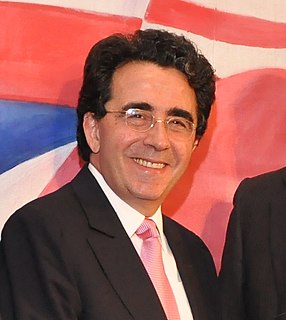 W
WSantiago Calatrava Valls is a Spanish architect, structural engineer, sculptor and painter, particularly known for his bridges supported by single leaning pylons, and his railway stations, stadiums, and museums, whose sculptural forms often resemble living organisms. His best-known works include the Olympic Sports Complex of Athens, the Milwaukee Art Museum, the Turning Torso tower in Malmö, Sweden, the World Trade Center Transportation Hub in New York City, the Auditorio de Tenerife in Santa Cruz de Tenerife, the Margaret Hunt Hill Bridge in Dallas, Texas, and his largest project, the City of Arts and Sciences and Opera House in his birthplace, Valencia. His architectural firm has offices in New York City, Doha, and Zürich.
 W
WAraldo Cossutta was an architect who worked primarily in the United States. From 1956 to 1973 he worked at the firm I. M. Pei & Partners. I. M. Pei has been among the most honored architects in the world. Cossutta was Pei's associate and ultimately his partner in the first phase of Pei's career. He was responsible for some of the firm's best-known designs from that era, including three that have received "landmark" designations in recent years. In 1973 he and Vincent Ponte left Pei's firm to form Cossutta & Ponte, which ultimately became Cossutta and Associates. The new firm designed the Credit Lyonnais Tower in Lyon, France (1977) and the Tower at Cityplace (1988) in Dallas, Texas, among other commissions.
 W
WNorman Robert Foster, Baron Foster of Thames Bank, is an English architect and designer. Closely associated with the development of high-tech architecture, Foster is recognised as a key figure in British modernist architecture. His architectural practice Foster + Partners, first founded in 1967 as Foster Associates, is the largest in the United Kingdom, and maintains offices internationally. He is the President of the Norman Foster Foundation, created to 'promote interdisciplinary thinking and research to help new generations of architects, designers and urbanists to anticipate the future'. The foundation, which opened in June 2017, is based in Madrid and operates globally.
 W
WMassimiliano Fuksas is an Italian architect. He is the head of Studio Fuksas in partnership with his wife, Doriana Mandrelli Fuksas, with offices in Rome, Paris and Shenzhen.
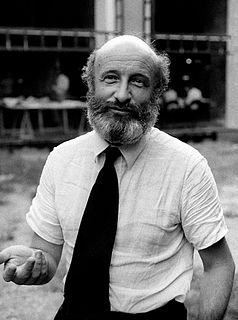 W
WVittorio Gregotti was an Italian architect, born in Novara. He was seen as both a member of the Neo-Avant Garde and a key figure in 1970s Postmodernism.
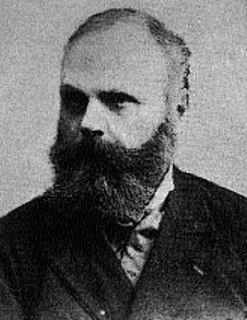 W
WEugène Alfred Hénard was a French architect and a highly influential urban planner. He was a pioneer of roundabouts, which were first introduced in Paris in 1907.
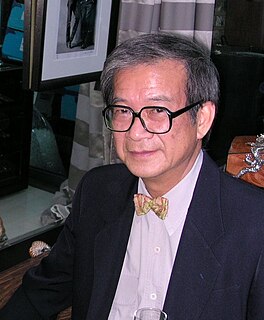 W
WSumet Jumsai na Ayudhya is a Thai architect. He was named a National Artist of Thailand in 1998; Honorary Fellow of The American Institute of Architects 2001 ; Member of the French Académie d'Architecture 2002 ; Fellow Commoner, St.John's College, Cambridge, 2003 and 2013, where he earlier obtained a doctorate degree in architecture ; and Chevalier de l'Ordre des Arts et des Lettres (France) 2008. He is also a painter and author.
 W
WLucien Kroll is a Belgian architect known for his projects involving participation by the future inhabitants of the buildings. His most famous work is the Medical Faculty Housing at the University of Leuven, Belgium, from 1970–76. These buildings "aroused widespread controversy in the early 1970s, their fragmented and improvisational appearance— the result of a deliberate participatory design process— in stark contrast to the adjacent massive and repetitive hospital, the embodiment of a centralized bureaucracy."
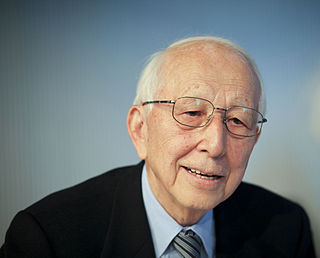 W
WFumihiko Maki is a Japanese architect who teaches at Keio University SFC. In 1993, he received the Pritzker Prize for his work, which often explores pioneering uses of new materials and fuses the cultures of east and west.
 W
WRichard Meier is an American abstract artist and architect, whose geometric designs make prominent use of the color white. A winner of the Pritzker Architecture Prize in 1984, Meier has designed several iconic buildings including the Barcelona Museum of Contemporary Art, the Getty Center in Los Angeles, and San Jose City Hall.
 W
WEugène Louis Millet was a French architect. He planned and began the restoration of the Château de Saint-Germain-en-Laye, home of the Museum of National Antiquities.
 W
WJosé Rafael Moneo Vallés is a Spanish architect. He won the Pritzker Prize for architecture in 1996, the RIBA Royal Gold Medal in 2003 and La Biennale's Golden Lion in 2021.
 W
WManfredi Nicoletti was an Italian architect.
 W
WJean Nouvel is a French architect. Nouvel studied at the École des Beaux-Arts in Paris and was a founding member of Mars 1976 and Syndicat de l'Architecture. He has obtained a number of prestigious distinctions over the course of his career, including the Aga Khan Award for Architecture, the Wolf Prize in Arts in 2005 and the Pritzker Prize in 2008. A number of museums and architectural centres have presented retrospectives of his work.
 W
WClaude Parent, born in Neuilly-sur-Seine, France, was a French architect.
 W
WIeoh Ming Pei, FAIA, RIBA was a Chinese-American architect. Raised in Shanghai, Pei drew inspiration at an early age from the garden villas at Suzhou, the traditional retreat of the scholar-gentry to which his family belonged. In 1935, he moved to the United States and enrolled in the University of Pennsylvania's architecture school, but he quickly transferred to the Massachusetts Institute of Technology. He was unhappy with the focus at both schools on Beaux-Arts architecture, and spent his free time researching emerging architects, especially Le Corbusier. After graduating, he joined the Harvard Graduate School of Design (GSD) and became a friend of the Bauhaus architects Walter Gropius and Marcel Breuer. In 1948, Pei was recruited by New York City real estate magnate William Zeckendorf, for whom he worked for seven years before establishing an independent design firm in 1955, I. M. Pei & Associates. In 1966 that became I. M. Pei & Partners, and in 1989 became Pei Cobb Freed & Partners. Pei retired from full-time practice in 1990. In his retirement, he worked as an architectural consultant primarily from his sons' architectural firm Pei Partnership Architects.
 W
WCésar Pelli was an Argentine-American architect who designed some of the world's tallest buildings and other major urban landmarks. Two of his most notable buildings are the Petronas Towers in Kuala Lumpur and the World Financial Center in New York City. The American Institute of Architects named him one of the ten most influential living American architects in 1991 and awarded him the AIA Gold Medal in 1995. In 2008, the Council on Tall Buildings and Urban Habitat presented him with The Lynn S. Beedle Lifetime Achievement Award.
 W
WRenzo Piano is an Italian architect. His notable buildings include the Centre Georges Pompidou in Paris, The Shard in London (2012), the Whitney Museum of American Art in New York City (2015) and Stavros Niarchos Foundation Cultural Center in Athens (2016). He won the Pritzker Architecture Prize in 1998.
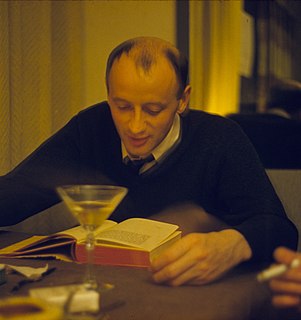 W
WEamonn Kevin Roche was an Irish-born American Pritzker Prize-winning architect. He has been responsible for the design/master planning for over 200 built projects in both the U.S. and abroad. These projects include eight museums, 38 corporate headquarters, seven research facilities, performing arts centers, theaters, and campus buildings for six universities. In 1967 he created the master plan for the Metropolitan Museum of Art, and henceforth designed all of the new wings and installation of many collections including the recently reopened American and Islamic wings.
 W
WRichard George Rogers, Baron Rogers of Riverside is an Italian-British architect noted for his modernist and functionalist designs in high-tech architecture.
 W
WCharles Rohault de Fleury was a French architect who designed many buildings in Paris, France, in the 19th century. In his later life he wrote a number of books on archaeological and religious subjects.
 W
WJacques Rougerie is a French architect-oceanographer who specializes in underwater habitats.
 W
WErnest-Paul Sanson was a French architect trained in the Beaux-Arts manner.
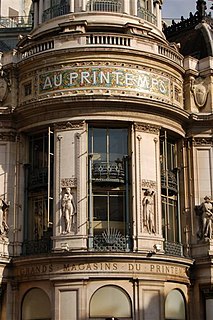 W
WPaul Sédille was a French architect and theorist; and designed the 1880 reconstruction of the iconic Magasins du Printemps department store in Paris.
 W
WHarry Seidler, AC OBE was an Austrian-born Australian architect who is considered to be one of the leading exponents of Modernism's methodology in Australia and the first architect to fully express the principles of the Bauhaus in Australia.
 W
WAntoine Paul Selmersheim was a French diocesan architect. He is known for his design, construction, and restoration efforts on many churches during the 19th century. He became inspector-general of historical monuments.
 W
WHeikki Siren was a Finnish architect. He graduated from the Helsinki University of Technology in 1946 as a student of his father J. S. Sirén. Heikki Siren designed most of his works together with his spouse Kaija Siren.
 W
WJean-Pierre Sueur is a member of the Senate of France, representing the Loiret department. He is a member of the Socialist Party.
 W
WJean-Paul Viguier is a French architect. He is considered one of the world's leading architects and one of the few French ones to work extensively outside of Europe.
 W
WLouis Tullius Joachim Visconti was an Italian-born French architect and designer.
 W
WJean-Michel Wilmotte is a French architect.